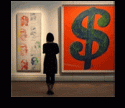The Do’s and Don’ts Of Grant Applications
 Writing grant applications is a drag. We all get that. We also get that people are looking for money anywhere they can to help them do the art they are passionate about, and we want to support as many artists as we can. That said, there’s a right way and wrong way to ask for money.
Writing grant applications is a drag. We all get that. We also get that people are looking for money anywhere they can to help them do the art they are passionate about, and we want to support as many artists as we can. That said, there’s a right way and wrong way to ask for money.
The Dos (with a few don’ts thrown in for examples):
1. Do answer the questions actually being asked: It sounds so simple, and yet… When an application says “Provide a brief summary of the proposed activities” it means “give us your pitch.” Don’t start explaining who you are and how you came to do what you do. Don’t talk about the amazing people you work with. Think of it as your elevator pitch, which is sales/development jargon for “make the sale in the time it takes to ride an elevator a few floors.”
2. Be concise: Remember that yours is not the only application anyone is going to read. No proposal reviewer takes their job lightly, and has a lot of reading to do. Tell them what you want, why you want it, and why they should give it to you. As fascinating as the back story to how you came to want to do what you want to do, and I’m sure it is really interesting, the back story is not what you’re asking for money for, never mind your collaborator’s back story.
3. Be specific: This goes for every part of the application. If you’re applying for money for a consultant, report exactly what that person will do and exactly how you will go on doing what you need to do without that person when the consultant is done. If you are filling out a budget, report exactly how much each aspect is going to cost. Don’t just say “art materials- $1000” Say “Paint $50; Frame $25; ect” Vagueness raises red flags.
4. Be clear: Seriously. This one might be subtitled “proof read and make sure you’re saying everything you need to say correctly.” If you want money to go to an organization to work with an amazing dance company, say that. Don’t go off on long tangents.
5. Take the application seriously: Don’t just throw together an application in the last moment. [Grant organizations] get lots of strong applications and the best ones are those that are well considered and well written. Put real effort into your proposal; others are putting effort into theirs.
The Don’ts (the ones I didn’t mention above)
1. Don’t ask for something that doesn’t fit the grant guidelines: This is a pitfall for large organizations as much as individual artists, for grants of every size. But I’ll use an example closer to home: if you’re applying for an organizational development grant, don’t ask for money for Photoshop for your photography. That’s not developing your organizational structure, that’s a tool you use for your art. Read the guidelines carefully. If you’re not sure, ask.
2. Don’t expect the grants committee to fill in the blanks: Here’s a common mistake. If a proposal includes a budget for $3500, asks for the maximum of $1000, and doesn’t clearly explain where the difference is going to come from.
If the grantor does not think you’re going to be able to accomplish what you want to accomplish, they are not going to fund it. If you say it’s going to cost more than what you’re requesting, but that you’re also approaching other realistic funding sources and/or have other means of covering the cost, we have no problem contributing.
3. Don’t assume anything about who is reading your proposal, except that they want to give money: This is kind of a do and a don’t shoved together. It’s important to be explicit about what you want and why it’s valuable, but don’t assume the committee is filled with experts in your field. On the other hand, don’t assume they know nothing.
4. And finally, don’t ask for money to file as a 501(c)3: If you need to ask for money to file, you’re not ready to file.
If you’re an individual artist or a small organization, would you rather spend the first quarter of each year shuffling papers and probably talking to an accountant, or making your work? I vote for number two.
This is by no means an exhaustive list, more a jumping off point.

